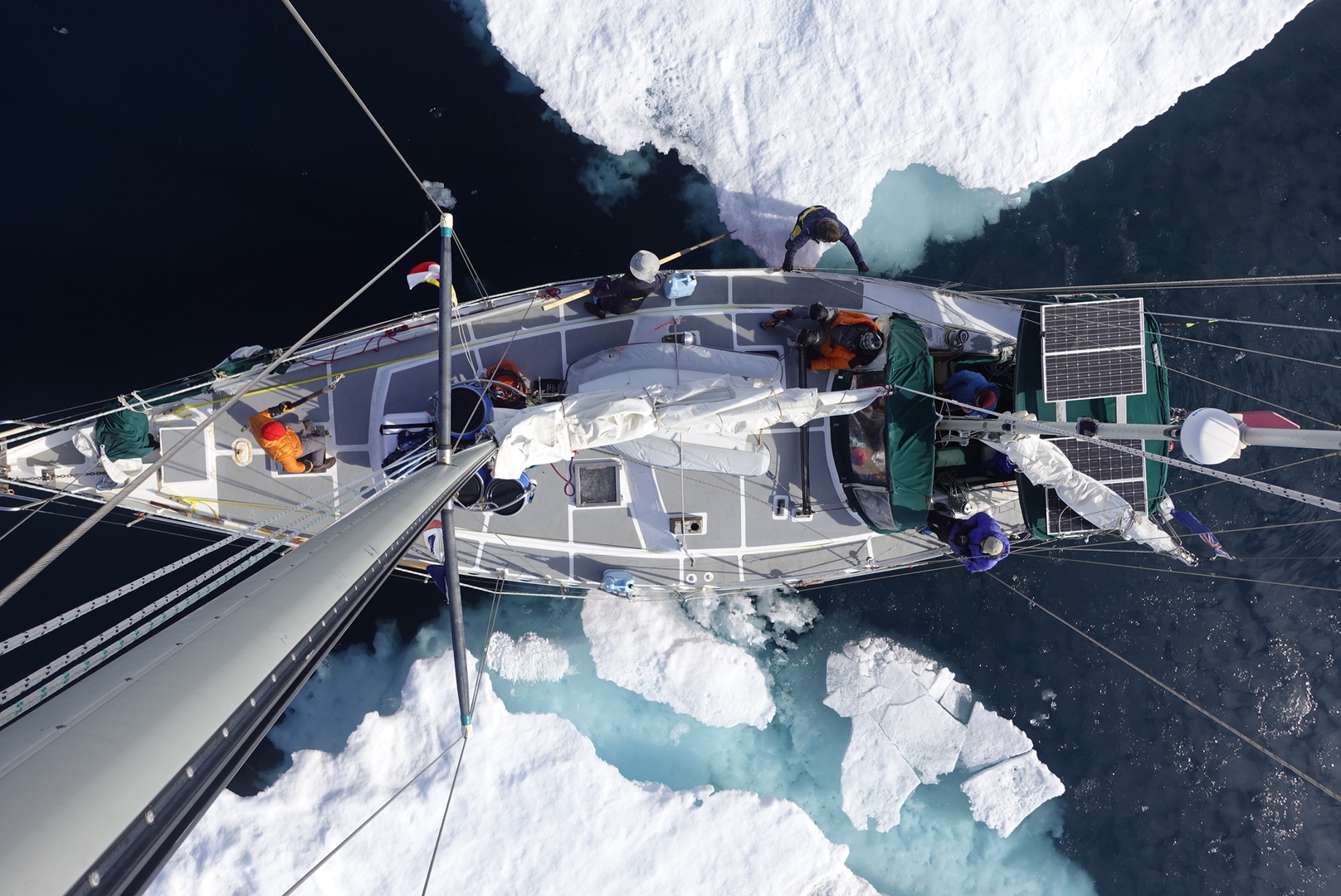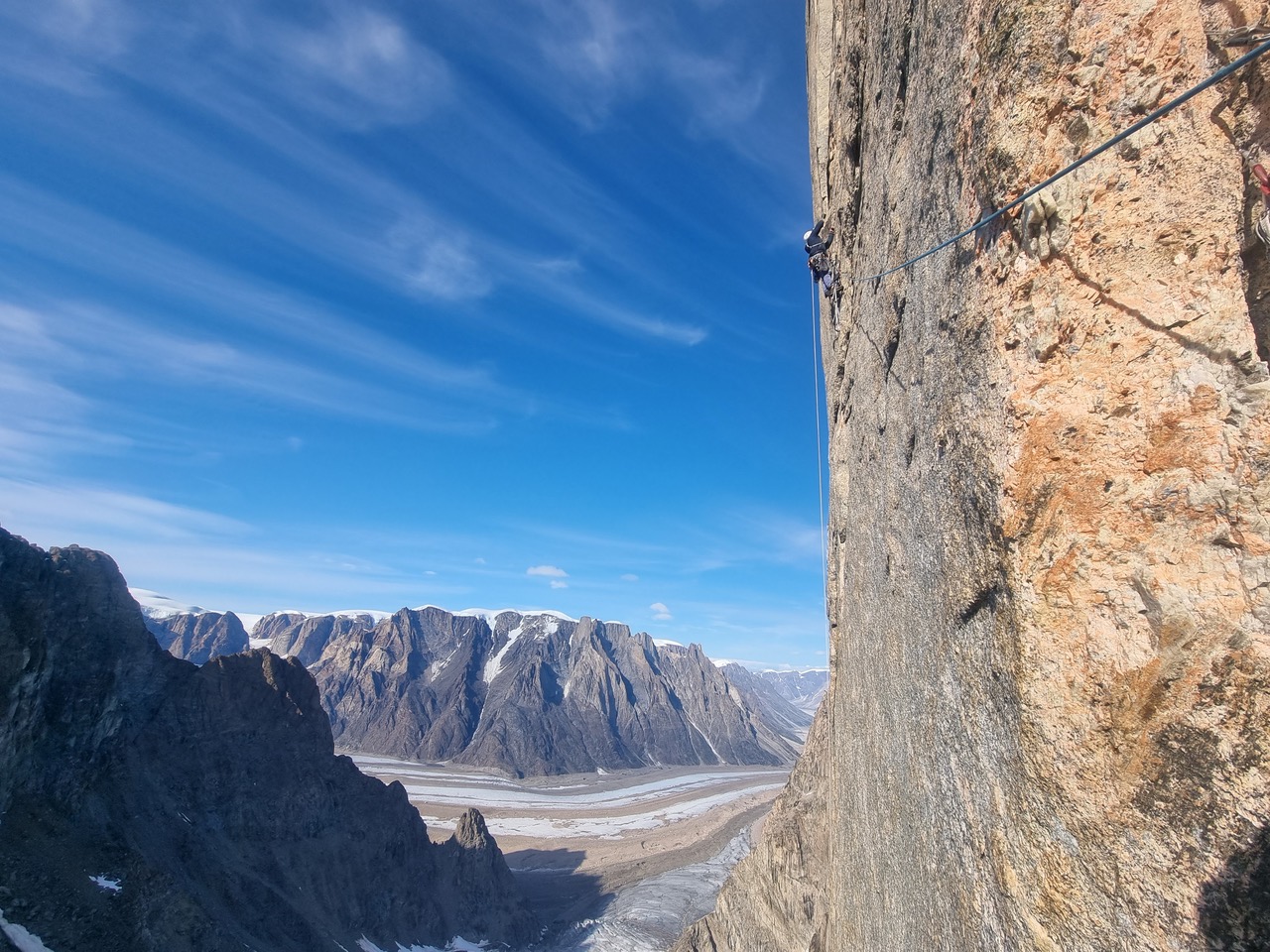Sean Villanueva almost needs no introduction: he’s a versatile and multifaceted climber, but also an exceptional musician and a colorful figure in the international climbing community. He often travels around the world, seeking extreme adventures and untouched walls on which he can freely express his creativity. He's also part of the SCARPA Team, along with Nico Favresse, and they made us fall in love with Greenland through "The Dodos!", a series of episodes now available on Reel Rock. Effervescent and enthusiastic, Sean Villanueva is one of those climbers bringing something different to the climbing scene, a value that makes us forget about the grades of the new routes in favor of a more artistic view of rock climbing. It’s a way of life that leads him to live in the most remote areas of the world, experiencing the research of new and pure lines.
We had an interview with him to ask him more about his recent Greenland expedition and his "wandering" climbing life.

O: Hi Sean, it's a pleasure to meet you. Where in the world are you right now?
S: I’m in Iceland! I've been here for 3 weeks now. On our way back from Greenland, the engine of the sailboat stopped working. You don’t really need an engine for sailing, but it offers good safety for when there is no wind, especially this time of year. You wouldn’t want to get stuck in the middle of the Atlantic with no wind when there is a hurricane coming towards you. The rest of the climbing team flew back, but I've decided to stick with the sailboat to see if we can get the engine fixed and sail back to Ireland. Luckily, Iceland is a beautiful country with plenty of opportunities to go for long hikes/runs in the rain and lots of great hang-board locations
O:Your recent journey to Greenland with Nico Favresse, and also this unplanned final show us how much such an adventure begins from the journey itself: the sailboat crossing had already been a memorable experience! What have you appreciated most from this first part of the journey?
S:The good laughs with this mixed bunch of characters, enjoying the unique places we get to go to, and building up the psyche by staying fit and training hard while on the journey.

O:Together with all the climbers who were in Greenland, you have spent more than a month far from every kind of “comfort zone,” including the simplest logistics related to daily life. Does it help you when it comes to push harder on an unknown wall that still is entirely to be deciphered?
S:I thrive on hardship; I learn from it, it keeps me focused, brings me in the moment, and keeps me away from distractions. It brings me closer to life. But you also have to be conscious that a small accident can have major consequences. This year Nico fell while on the approach and got a cut in his leg. It would have been trivial anywhere else, but there, far from any hospital or doctor, it was significant, and he had to be very careful for the rest of the trip.
O:From "The Dodos!" series, we can guess that Greenland rock is very compact and with few holds, thus requiring a very technical climbing style that seems far from the one we get used to in climbing gyms. Is it correct? What can you say about Greenland climbing style?
S:The climbing style in Greenland is very varied, depending on where you go (Greenland is huge) and what wall you get on, you can find iron-hard rock or decomposing choss, featured or completely compact blankness. The one thing that is for certain is that the climbing is very adventurous! It is certainly very different from what we get used to in a climbing gym. There is lots of uncertainty, lots of big walls, lots of intense experiences to be had, absolutely mind-blowing scenery. It’s almost like you are on a different planet sometimes. The 24-hour daylight in the summer months is quite special. At least you don’t have to worry about night falling down on you. But I guess you can have that in the climbing gym also with artificial lighting.

O:We can imagine that Greenland has a short and complicated “good season” to go rock climbing: how long does it last?
S:The best months are June, July, August. Before and after that, the nights grow very fast, temperatures drop, and weather is more unstable. However, in June and the beginning of July, depending on where you go, the access can be very difficult as the sea-ice is breaking up. That’s when you can’t approach by ski or snowmobile, and you can’t go by boat either. This year the 24th July was the earliest we could get into Scoresbury Sund by sailboat, and we had to squirm and wrestle with some big ice floes.
O:Have you brought more musical instruments or more climbing shoes with you, and which ones?
S:I brought my Irish bagpipes (Uilleann pipes), tin whistles, flutes, harmonica, and diatonic harmonica.
For climbing shoes, I stuck with the reliable Instinct VS; they are just super versatile. Slab, crack, overhang, razors, friction… they’re good on everything.
O:You are used to being in the most remote areas of the world for such a long time… how does it feel to be back at home? Do you want to leave again as soon as you can, or do you also like to chill at home a little bit?
S:Home is a mindset. I might chill for a bit.

O:How do you choose the next adventure's destinations?
S:It chooses me. It’s like when you get a phone call… you either answer, or you don’t.
O:Is there a place where you still haven’t been that represents "a secret dream"?
S:Many.
O:If you could bring just a pair of climbing shoes on your next trip, which ones would they be?
S:I’m going to stick to Instinct VS because they are a sure thing in any situation. But it would be a difficult choice because I really like the Veloce L for their incredible comfort and softness. It’s what I use most for the moment.
Thanks, Sean, see you soon!
